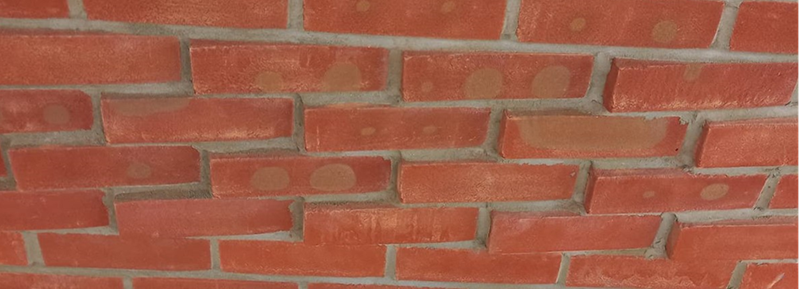Download a PDF version of this article.
This technical update provides additional guidance relating to the use of architectural detailing using brickwork, and the effect on durability of the bricks to achieve the necessary service life required by the Functional Requirements of the Premier Guarantee Technical Manual.
With architectural detailing of brickwork becoming more common in external façades, we need to ensure that the durability of the external brick, whether clay or concrete, is not compromised by unsuitable exposure of the top of the component to potentially greater exposure from weather conditions. This can result in reducing its expected lifespan and compromising its ability to meet with the Functional Requirements of the Premier Guarantee Technical Manual.
When considering external wall construction for warranty purposes we need to think about the many components and their interaction to the proposed environment.
Quite often we may overlook the components involved in masonry façades as they are seen as being more robust than other forms of materials used in external locations. However, this is not always the case.
Architectural detailing within brickwork patterns can result in bricks being partly projected out from the face of the wall. Below is an example of a “saw-tooth/wave pattern” where the tops of the bricks project out from the face of the wall. In this particular case, the brick manufacturer confirmed that as result of using this pattern, the lifespan of their brick would be reduced to 30 years from the 60 years anticipated when laid in the traditional manner.

Where the proposed projecting bricks include frogs or perforations, this can have a negative impact upon the integrity and thus durability of the brick, potentially reducing the service life of the brick below the required 60 years as required by our warranty.
In order to ensure that the correct brick is being used for the proposed detailing, the topside exposure of the brick needs to be considered and whether there is a risk of any perforations or frogs becoming exposed. If this is the case then a referral needs to be made to the brick manufacturer so that they can confirm the brick service life will be not less than 60 years. The designer may wish to consider the use of “special-bricks” provided specifically by the manufacturers to create the selected pattern.
In addition to the issues of the reduced service life, the developer should also be mindful of achieving appropriate detailing around sections of masonry that require closing for water penetration and fire safety requirements. For example, a non-standard brickwork pattern can present a non-uniform face where vertical DPC and fire cavity barriers need to be built into, thus creating a poor seal between masonry and DPC/cavity barrier component.
For the avoidance of doubt, the brick manufacturer should confirm the expected durability of the product in the proposed use so that it will meet our warranty service life requirement of 60 years.
Read more articles on the Resource Hub and sign up to receive our blog round-up.
Every care was taken to ensure the information in this article was correct at the time of publication. Guidance provided does not replace the reader’s professional judgement and any construction project should comply with the relevant Building Regulations or applicable technical standards. For the most up to date Premier Guarantee technical guidance please refer to your Risk Management Surveyor and the latest version of the Premier Guarantee Technical Manual.